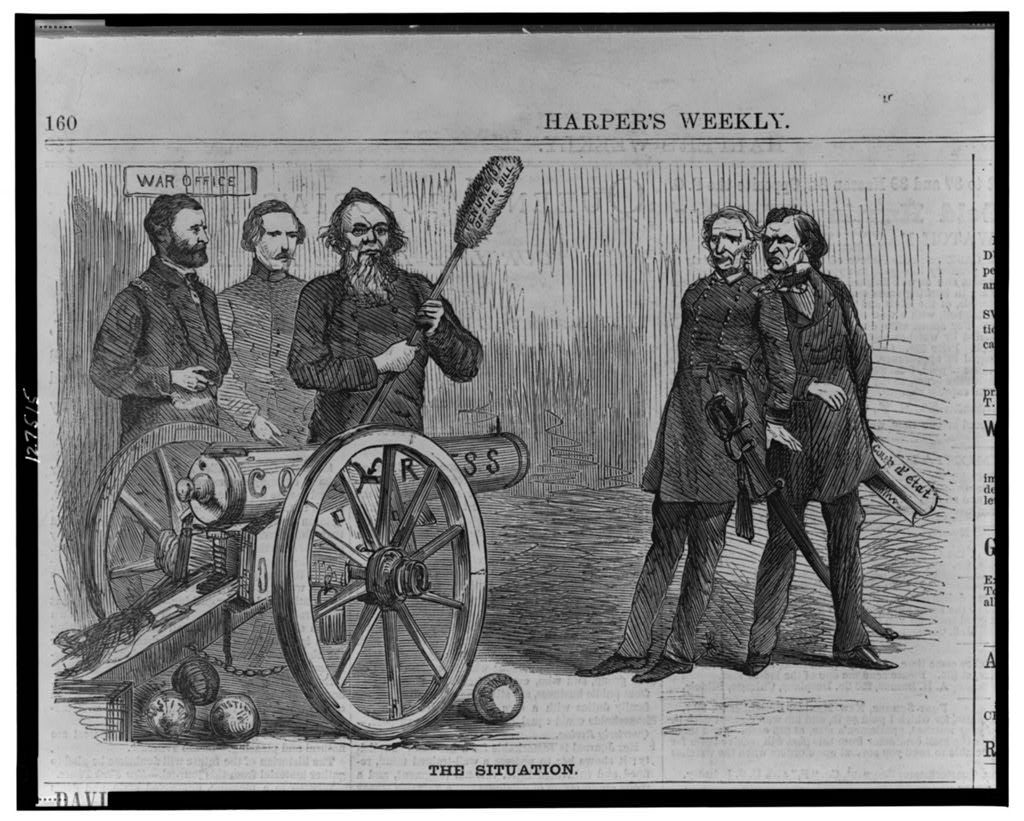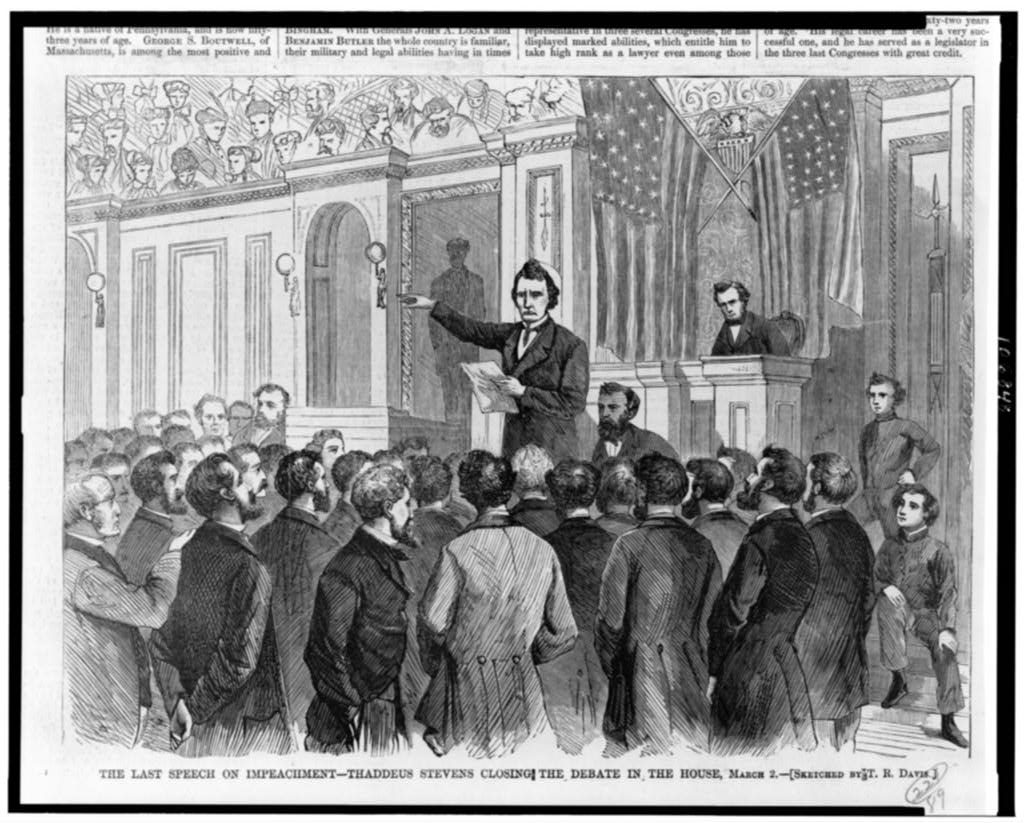On March 2, 1868 the United States House of Representatives agreed to nine Articles of Impeachment against President Andrew Johnson. The next day it added two more. You can read a summary of the charges at Wikipedia. Article One was Mr. Johnson’s attempted ouster of Secretary of War Edwin M. Stanton on February 21, 1868, when the president sort of intentionally tripped over the trip wire that was the Tenure of Office Act. The tenth charge recounts some of the president’s most egregious utterances during his Swing Around the Circle in the fall of 1866. On March 5 the trial began with the swearing in of Chief Justice Salmon P. Chase (the judge) and the first U.S. Senators (the jury). From The New-York Times March 6, 1868:
… Special Dispatch to the New-York Times.
WASHINGTON, Thursday, March 5.
The trial of the Impeachment of the President has begun. The first step in the organization of the Court was begun to-day, and but for the irrepressible penchant for talking in the Senate would have been fully completed. The hour of [1?] o’clock found the galleries all crowded; those for the ladies being radiant with all the bright colors of brilliant toilettes, brought out by the first fair weather for well nigh a month. Interest and expectancy were great, and were increased by the doubt arising from the rumor that the Chief Justice could not attend to-day, then that he had refused to come at all. But at 1 o’clock, just as Messrs. SHERMAN and CONKLING were demonstrating in a mathematical manner just how many people could be stowed away in the galleries, the committee to notify the Chief Justice appeared below the bar, escorting that officer, who, clad in the black official robes of his high office, as soon as received, ascended to the chair of President [pro tempore] WADE and announced himself present in his official character to try the impeachment against ANDREW JOHNSON, President of the United States.
Mr. Justice NELSON, the oldest judge on the Supreme Bench, then administered the oath to the Chief Justice, and he in turn announced his readiness to administer the oath to Senators. The roll was called in alphabetical order, and the rather monotonous process of taking the oath separately by each member was proceeded with until the name of Mr. WADE was reached. [A debate about whether the President Pro Tempore should sit in judgment because he would become U.S. President if Andrew Johnson was convicted and removed. No final determination on the 5th.]
If the organization is completed tomorrow, the summons citing the President to appear will be issued at once, and made returnable on Tuesday next. It will then be determined how much time he shall be allowed to prepare his defence. During the proceedings of the Senate to-day nearly all the members of the House were present, and the Managers were in the lobby, awaiting the completion of the organization of the Court.



